
Roots
Across generations, the very fibers of our being carry whispers of distant shores, of resilience etched into every curve and coil. When we speak of textured hair, we speak of more than mere biology; we speak of a profound lineage, a living chronicle of humanity’s enduring spirit. Within the shadowed chapters of enslavement, hair, in its myriad forms, stood as a silent sentinel, a conduit for survival, a bold declaration of existence in the face of relentless efforts to erase identity. The story of textured hair during this brutal era is a testament to the ingenuity and fortitude of people who held onto their spirit against incredible odds.
It speaks to the ancient wisdom held within ancestral practices, demonstrating how even the seemingly simple act of hair styling became a shield, a map, a message. This heritage, so deeply woven into the very strands, continues to resonate today, connecting us to a past where dignity was preserved, often through the meticulous crafting of coils and plaits.

The Anatomy of Ancestry
The physical characteristics of textured hair – its varying degrees of curl, its strength, its capacity for volume – are not random occurrences. They are the result of remarkable biological adaptations perfected over millennia within African lineages. Unlike straight hair, which typically grows from a round follicle, textured hair often emerges from elliptical or oval follicles. This unique follicular shape causes the hair shaft to twist as it grows, creating the distinct coil or wave patterns.
The density of hair follicles on the scalp, often higher in individuals with textured hair, contributes to its fullness. This structural architecture allowed for styles that held their shape, providing both aesthetic expression and practical utility.
The intricate micro-structure of textured hair includes varying distribution of disulfide bonds and a cuticle layer that tends to lift more readily. These aspects contribute to its tendency for dryness and its susceptibility to breakage if not cared for with understanding and appropriate methods. Yet, these very characteristics also grant it incredible versatility and volume, making it amenable to a vast array of protective and expressive styles. In pre-colonial African societies, this understanding of hair’s elemental nature led to sophisticated care practices, knowledge that traveled across the Middle Passage, albeit severely challenged.
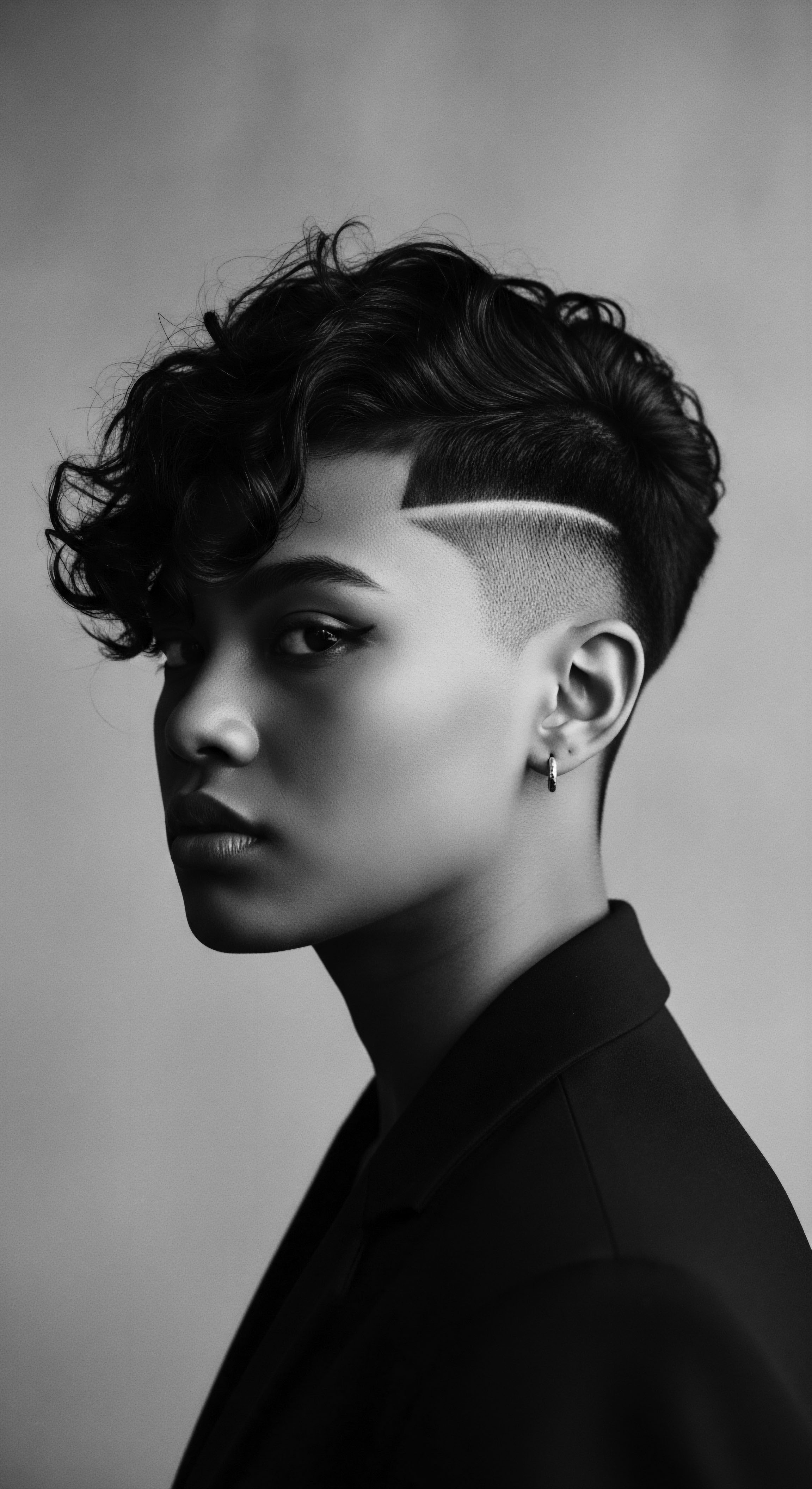
Nomenclature of Coils and Curls
The language used to describe textured hair today, with its classifications of types (like 3A, 4C) and textures, represents a modern attempt to categorize and understand its diversity. Yet, ancient communities possessed their own rich vocabulary, terms that recognized not just appearance but also social status, tribal affiliation, and spiritual connection. For enslaved people, the very act of maintaining distinct hair names, even if whispered in secret, affirmed a defiance against imposed anonymity. European enslavers, with their limited comprehension of African aesthetics and societal structures, often dismissed these distinctions, reducing complex hair forms to derogatory terms like “woolly.” This dismissal aimed to strip away cultural value, but the inherent beauty and functionality of textured hair resisted such diminishment.
What qualities of textured hair provided unexpected means for survival?
The inherent qualities of textured hair offered practical advantages for survival during enslavement. Its natural volume and tightly coiled structure provided a discreet repository. Braided patterns, particularly cornrows, could be crafted so close to the scalp that they created small, secure channels. These channels proved ideal for concealing tiny valuables ❉
- Seeds for future sustenance, smuggled from plantation fields or gathered in secret, representing a hope for future harvests and self-sufficiency (Ansah, 2025).
- Gold Dust or small precious stones, pilfered bits that could serve as currency for escape or bribe.
- Medicinal Herbs, vital for healing and maintaining health in conditions where proper medical care was denied or inadequate.
This unique physical attribute of the hair, often dismissed or ridiculed by oppressors, became a quiet ally in the struggle for liberty and basic needs. The capacity of these styles to hold objects, unseen by watchful eyes, allowed for the clandestine movement of resources essential to life itself beyond the plantation.
The forced shaving of heads upon arrival in the Americas was a deliberate act of dehumanization, a symbolic erasure of identity and cultural connection (Byrd & Tharps, 2001). In African societies, hair held profound social, spiritual, and aesthetic significance, signaling age, marital status, tribal affiliation, and rank (Byrd & Tharps, 2001). To be shorn of one’s hair was to be stripped of one’s very self, a violent severing from ancestral lineage.
Yet, even in this raw deprivation, resilience found a path. As new growth appeared, even rudimentary styling became an assertion of self, a small act of reclamation.
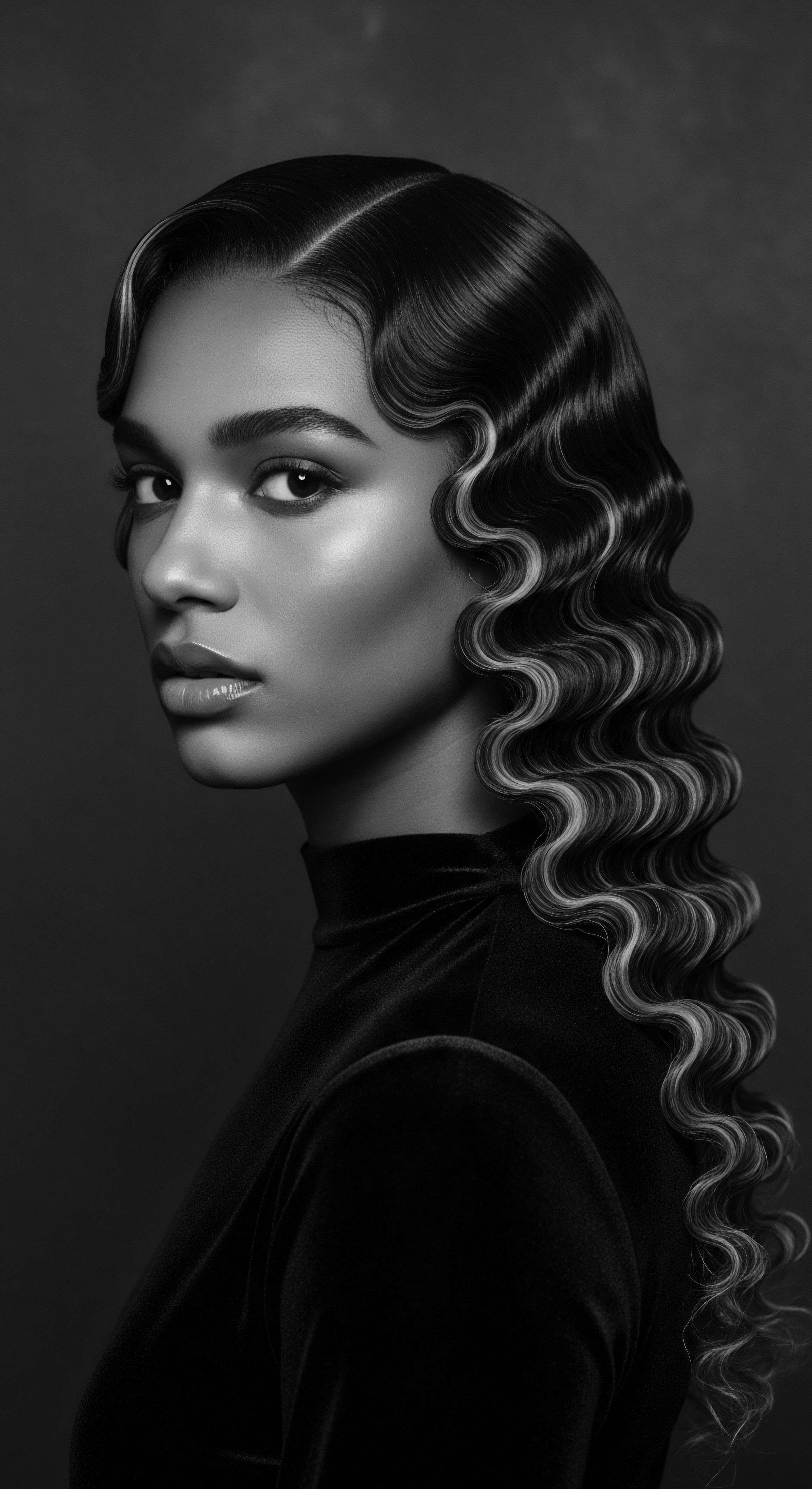
Ritual
The daily ritual of styling hair, a practice often dismissed as mere vanity, transformed under the brutal weight of enslavement into acts of profound cultural preservation and audacious resistance. These were moments of intimacy, shared wisdom, and silent planning. Hands moving through hair did not simply arrange strands; they conveyed messages, solidified community bonds, and reaffirmed a collective identity that bondage sought to dismantle.
This was an artistic expression, yes, but also a strategic maneuver, a quiet revolution happening on the scalp. The artistry of these styles was a direct inheritance from diverse West and Central African traditions, adapted and reimagined under duress.

Protective Styling as Preservation
Protective styles, such as cornrows and various forms of braids, became foundational for enslaved individuals. These styles shielded the hair from the harsh elements of relentless outdoor labor, prevented tangling, and minimized breakage, which was critical when access to proper tools and products was almost non-existent. More than just practical, these styles were deeply symbolic. They echoed ancestral methods, maintaining a tangible link to a rich cultural past.
The repetition of patterns, the rhythmic movement of hands, all served as a memory of home, a connection to a collective history. The very act of taking time to style hair, even in secret, was an assertion of self-worth and a refusal to succumb to the dehumanizing conditions.
Hair styling during enslavement was a defiant act of self-possession and communal sustenance.

Coded Communication in Coils
How did specific braided designs transmit concealed information?
The intricate patterns of cornrows, often dismissed by enslavers as merely aesthetic or “primitive,” served a powerful, covert purpose. They became a sophisticated system of communication, a silent language exchanged between those who understood its grammar. In regions like Colombia, a particular style known as “departes” featured thick braids tied into buns, signaling plans for escape (Ansah, 2025). Curved braids might represent winding paths, while straight rows could mark clear routes.
The direction of a braid, or the number of rows, could signify meeting points, water sources, or the location of safe houses along escape routes (Ansah, 2025; Odele Beauty, 2024). This ingenious use of hair for cartography and clandestine communication highlights the profound intellect and resourcefulness of enslaved people. It was a visual code, accessible only to those with the cultural key, allowing for the precise coordination of resistance efforts directly on the wearer’s head.
| Styling Element Cornrow Patterns |
| Potential Covert Meaning Encoded maps of escape routes, indicating direction, turns, and obstacles. |
| Styling Element Number of Braids |
| Potential Covert Meaning Signals for rendezvous times, safe house locations, or group size. |
| Styling Element Concealed Objects |
| Potential Covert Meaning Hiding seeds for future cultivation, small tools, or precious metals for survival after escape. |
| Styling Element Style Direction |
| Potential Covert Meaning Indicating pathways, whether toward freedom or specific points of interest. |
| Styling Element The art of hair styling became a silent, yet powerful, medium for strategic information exchange. |
Beyond transmitting escape plans, hair styling also reinforced collective identity. Amidst forced separation and the constant threat of family dissolution, the shared knowledge of styling traditions, passed down from elder women to younger generations, became a critical social bond. These sessions fostered community, provided solace, and preserved a sense of humanity. The creation of these styles, often performed in hushed gatherings after long days of labor, solidified connections that slavery aimed to sever.

Tools of Ingenuity
The tools available for hair care during enslavement were often rudimentary, yet the creativity applied was extraordinary. Shells, twigs, or even sharpened pieces of bone might replace traditional African combs. Natural oils derived from local plants, or even animal fats, served as conditioners and stylers.
The ingenuity was not simply in making do, but in adapting ancestral knowledge to new, hostile environments. This resourcefulness ensured that hair remained manageable, clean, and styled in ways that served both personal dignity and collective purpose.

Relay
The ongoing care for textured hair, from cleansing to conditioning and nightly protection, formed a vital chain in the story of survival and resistance. These practices, though often improvised and fraught with peril, represented a continuous relay of ancestral wisdom, adapted to the brutal realities of bondage. Hair care was not merely about appearance; it was a testament to self-worth, a commitment to health, and a quiet act of defiance against a system designed to strip away every shred of human dignity. This persistent dedication to bodily and spiritual wellness, communicated through generations, became a profound act of heritage preservation.

Daily Regimens of Resilience
Despite the lack of access to traditional African tools and ingredients, enslaved individuals devised regimens that maximized the health and manageability of their hair. The conditions of forced labor, exposure to sun and dirt, and limited hygiene resources made hair care particularly challenging. Yet, a conscious effort was made to cleanse hair, often using homemade lyes from wood ash or simple soaps, followed by moisturizing agents like animal fats or plant-based oils (Byrd & Tharps, 2001).
These practices prevented matting, reduced irritation, and preserved the hair’s structural integrity. This continuous act of self-care, a refusal to neglect one’s physical self, contributed directly to overall well-being in an environment engineered for physical and spiritual degradation.
What traditional practices helped maintain hair health under duress?
The ingenuity applied to hair care under enslavement often involved adapting available resources to mimic traditional African practices. Here are some examples ❉
- Homemade Cleansers ❉ Lye, made from combining ash and water, was used as a rudimentary soap to wash hair and scalp, removing dirt and preventing infestations.
- Natural Moisturizers ❉ Plant oils, if accessible, or rendered animal fats (like bacon grease) were applied to coat strands, offering some moisture and preventing excessive dryness and breakage in harsh conditions.
- Finger Detangling ❉ Without combs, individuals meticulously used their fingers to separate strands, a gentle method for maintaining manageability and minimizing damage to delicate hair.
These methods, while crude, attest to an enduring knowledge of hair needs and a commitment to its maintenance, even when proper tools were absent. It points to a deep, inherited wisdom about textured hair’s specific requirements.
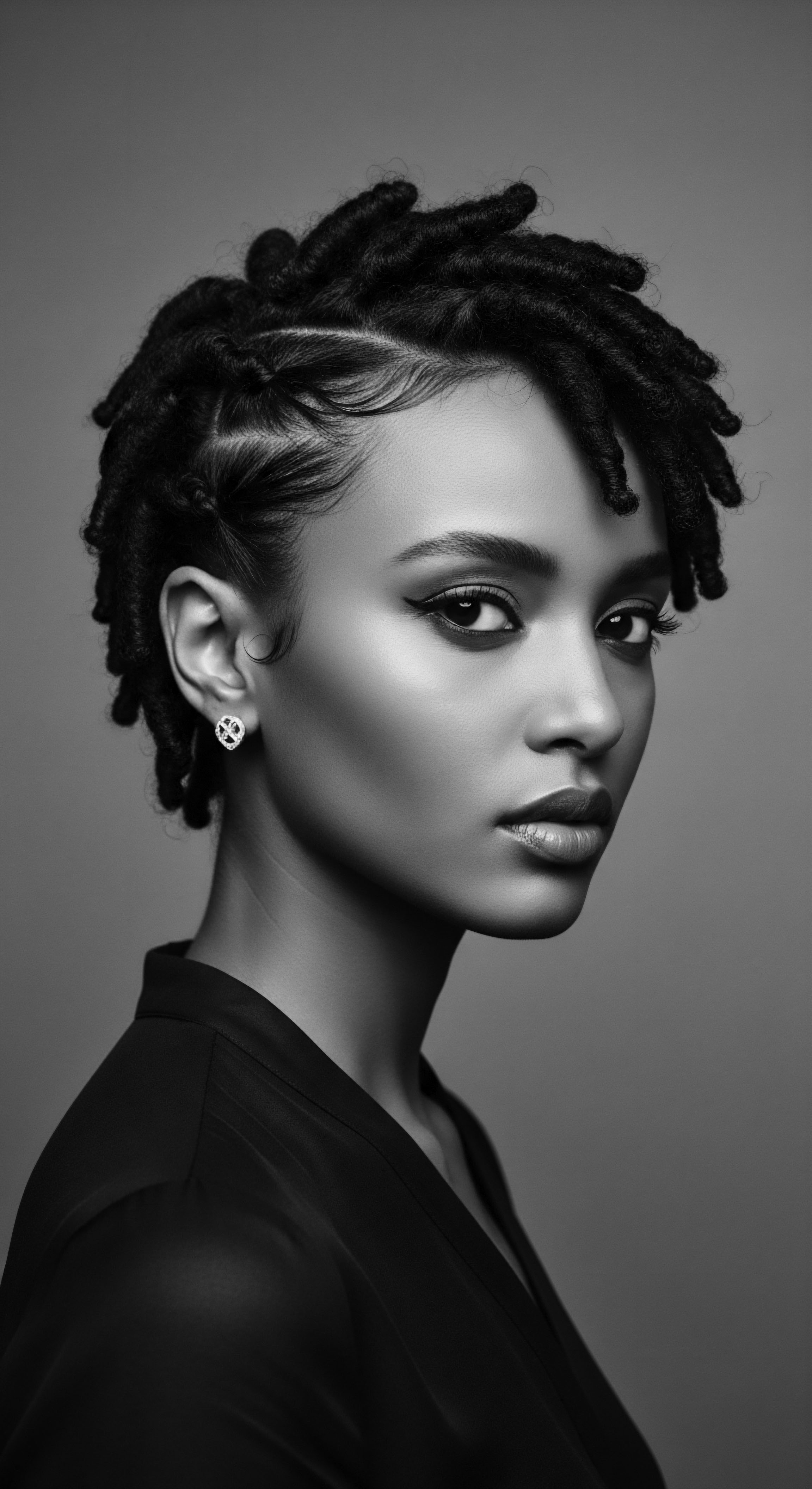
The Nighttime Sanctuary
The nighttime hours provided a rare, fleeting opportunity for intentional hair care and the quiet affirmation of self. During the day, women often covered their hair with headwraps or kerchiefs, practical for labor and a means of cultural expression, though sometimes enforced by enslavers (Byrd & Tharps, 2001). But as darkness fell, many removed these coverings, allowing for a space of intimacy and preservation. This was when hair was typically braided or twisted, both to maintain its condition for the next day and to protect it during sleep.
The practice of covering hair at night, the precursor to modern bonnets and scarves, was born of this necessity. It safeguarded styles, prevented tangles, and preserved moisture, ensuring that the day’s arduous efforts on the hair were not undone by the friction of movement during rest. This ritual, often performed collectively, solidified community bonds, allowing women to share stories, solace, and the quiet dignity of caring for one another.
Nighttime hair care rituals offered a vital respite, a personal haven for self-preservation and communal connection.
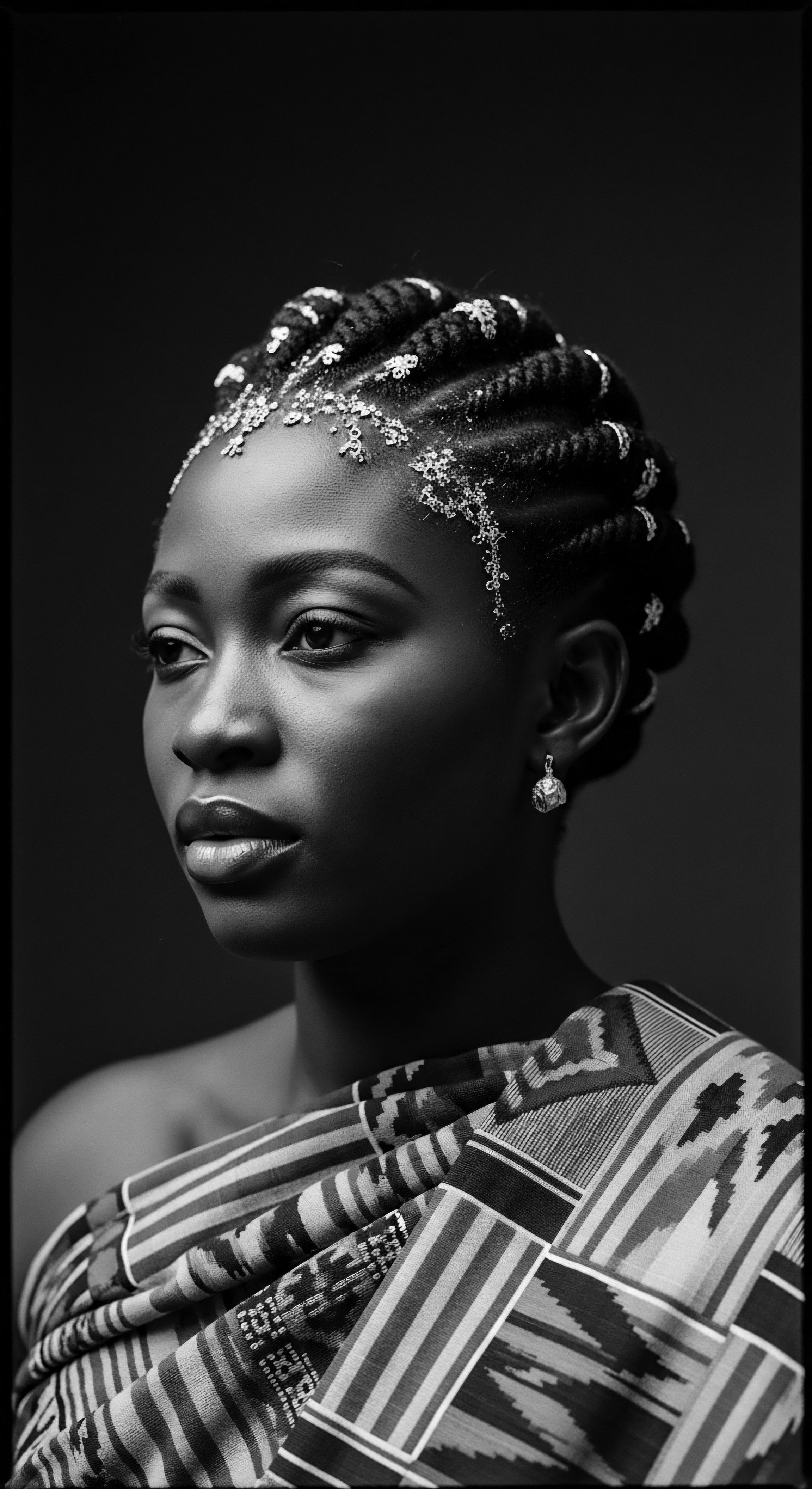
Problem Solving with Ancestral Wisdom
The problems faced by enslaved people regarding hair extended far beyond aesthetics; they encompassed issues of health, hygiene, and ultimately, survival. Infestations, scalp conditions, and severe breakage were common. The solutions often lay in a collective ancestral knowledge of plants and their medicinal properties. Herbs and natural compounds, used for healing and general wellness, were also applied to the hair and scalp.
For example, specific plant leaves might be crushed to create poultices for soothing scalp irritation, or their juices used to repel pests. This practical application of inherited botanical wisdom speaks to a profound connection to the land and a reliance on traditional remedies that predated and defied the constraints of enslavement. It reflects a deep understanding of natural resources for sustaining physical well-being.
The continuity of these practices, passed through generations, demonstrates the incredible power of cultural retention. Even when formally suppressed, the wisdom lived in hands, in memory, in hushed teachings. This intergenerational sharing of hair knowledge formed an integral component of the oral tradition, a vital means of preserving heritage and fostering solidarity amongst a people fragmented by force. The relay of these practices was itself an act of quiet, persistent resistance.
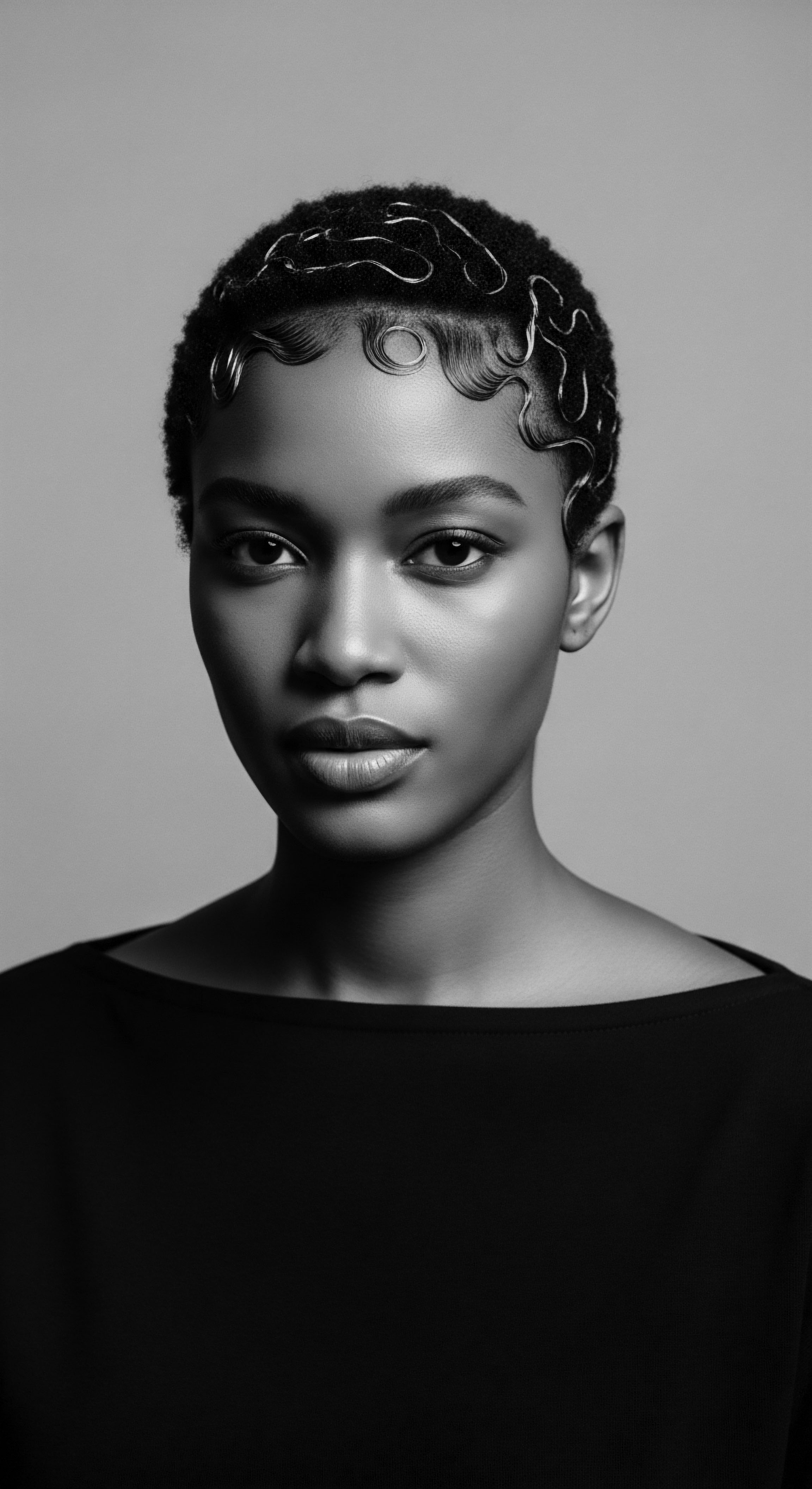
Relay
Beyond the immediate demands of physical survival, textured hairstyles served as powerful symbols of selfhood and collective spirit, carrying ancestral legacies forward through generations of profound upheaval. These hair forms were not merely functional; they were declarations. They asserted existence, cultural identity, and an enduring connection to a heritage that transcended the plantation boundaries. The continued practice of these traditions, in defiance of oppression, represented a remarkable transmission of cultural memory, a living archive inscribed on the very body.

Hair as a Beacon of Identity
How did hair become a statement of cultural defiance?
The styling of textured hair, especially after the initial forced head-shaving, became a potent symbol of identity. In West African societies, hair patterns communicated a vast array of personal information – social standing, marital status, age, ethnic group, and even one’s spiritual beliefs (Odele Beauty, 2024; Johnson & Bankhead, 2014, cited in Érudit, 2021). When enslaved Africans recreated these styles, even in simplified forms, they were reclaiming a piece of their stolen selves. This act was a direct rejection of the dehumanizing intent behind the shaving of heads, which aimed to erase their origins and individual histories.
Each braid, each coil, each twist became a whispered affirmation of who they were before bondage, and who they remained despite it. It was a visual language spoken among themselves, asserting a continuity of spirit and culture that their oppressors could not comprehend or extinguish.
The deliberate choice to wear specific patterns or forms, often reminiscent of styles from their homelands, allowed for a subtle yet profound expression of defiance. It was a way to maintain spiritual and psychological distance from their captors (Dadzie, 2021). This personal touch, this reclaiming of aesthetic agency, provided a source of dignity and psychological fortitude.
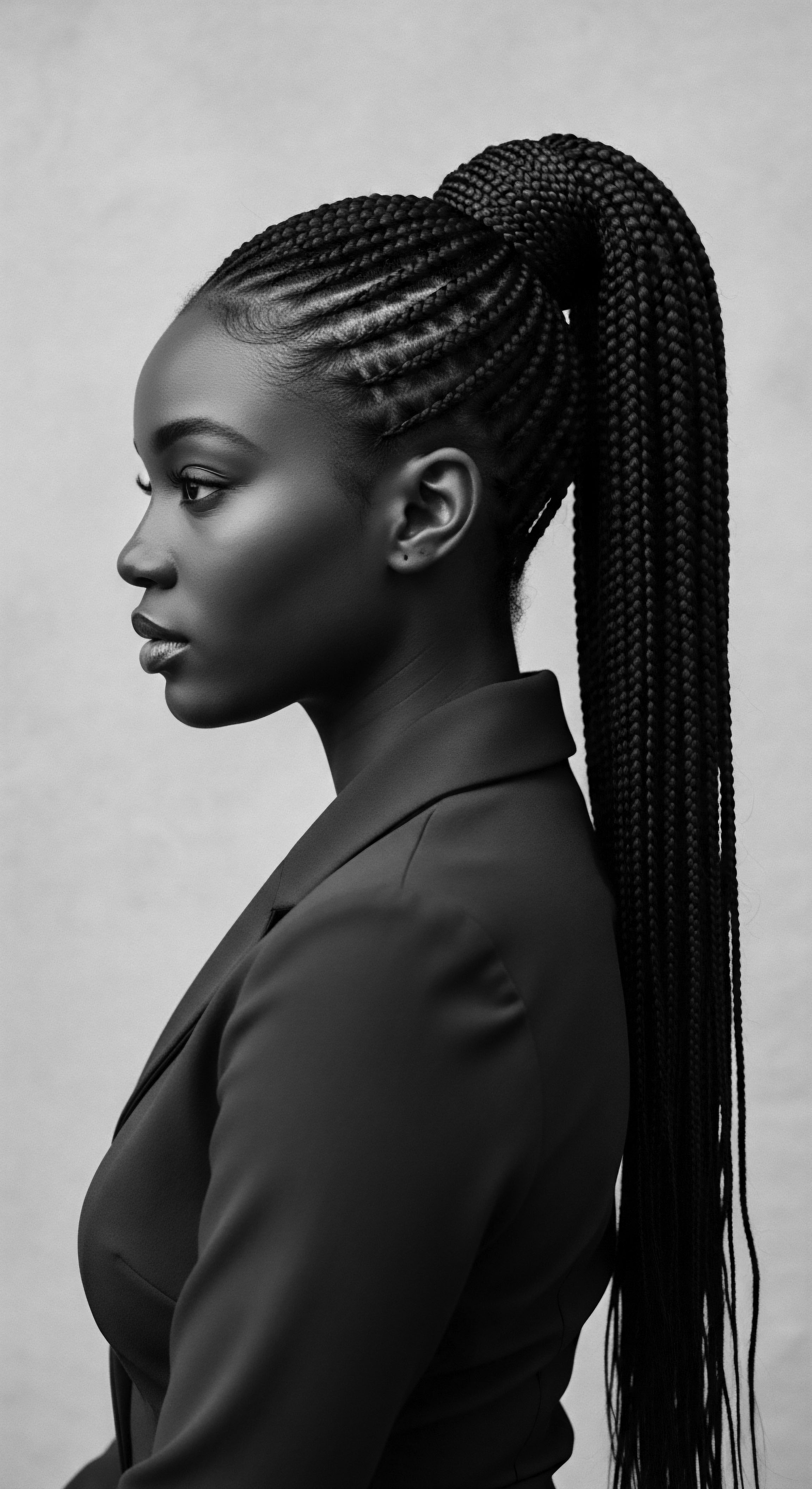
Shaping Futures, Preserving Lineage
The heritage of textured hair care, passed down from mother to daughter, from elder to youth, formed an unbroken line of cultural transmission. These were lessons not only in styling techniques but also in endurance, resourcefulness, and self-respect. The knowledge transferred included ❉
- The Art of Precise Sectioning and Braiding ❉ Skills necessary for protective styles that preserved hair health.
- Understanding of Local Botanicals ❉ Knowledge of which plants could cleanse, moisturize, or treat scalp conditions.
- The Communal Aspect of Hair Care ❉ The importance of shared time, conversation, and mutual support during styling sessions.
These exchanges, often conducted in secret gatherings or during precious moments of respite, cemented bonds within the enslaved community. They were living classrooms where ancestral wisdom was not just taught but lived, ensuring that future generations would possess the tools—both physical and spiritual—to care for their hair and, by extension, their sense of self. This lineage of care became a powerful mechanism for cultural survival, a legacy transmitted through touch and shared experience.
Consider the lasting impact of this period on hair practices within the African diaspora. Many contemporary styles and care methods bear the indelible mark of this history, serving as a constant reminder of the resilience of ancestors. The resurgence of natural hair movements in later centuries, particularly during the Civil Rights era, drew direct inspiration from this historical context, celebrating hair in its natural state as a symbol of pride and liberation (Odele Beauty, 2024; University of Cambridge, 2023). This enduring connection to ancestral practices, born of necessity and defiance, continues to shape identities and beauty standards within Black and mixed-race communities worldwide.
The enduring legacy of textured hair care is a vibrant testament to resilience, connecting past struggles to present pride.
The very act of retaining and passing on these distinct hair traditions during enslavement ensured that a vital component of African identity was not extinguished. It contributed to the collective sanity and cultural cohesion of a people under immense pressure (Dadzie, 2021). The hair, therefore, stood as a tangible link to a heritage that refused to be forgotten, a testament to the fact that even in the most brutal of circumstances, human spirit finds ways to persist, to communicate, and to declare its truth.
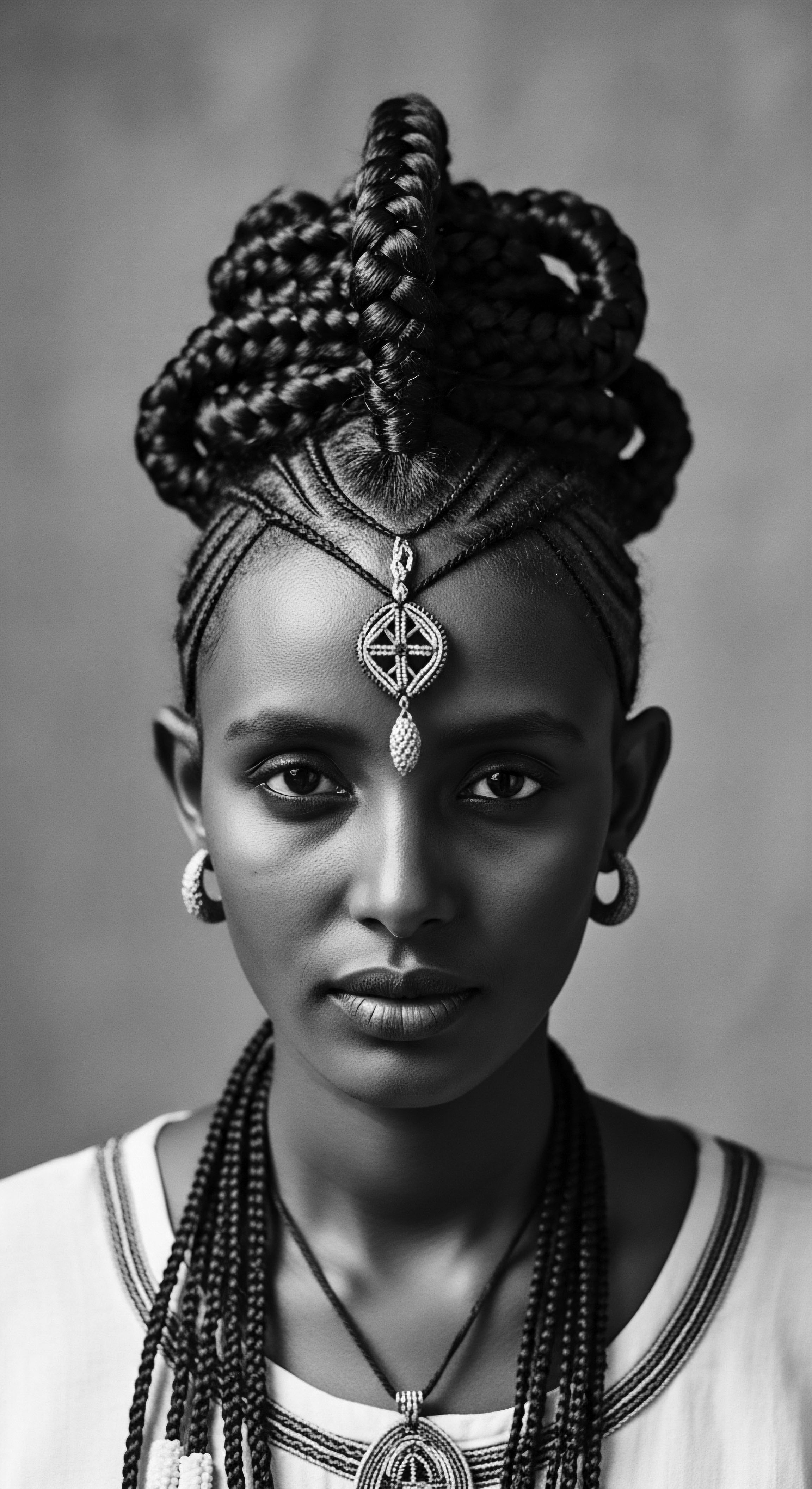
Reflection
The story of how enslaved people used textured hairstyles for survival and resistance reaches far beyond the historical record; it lives within the very genetic memory of each strand, each coil. It is a profound meditation on strength, artistry, and the unbreakable human will. This history reveals that hair, often perceived as merely an adornment, possesses a deep ancestral memory, acting as a living archive. It holds the echoes of whispered plans for liberty, the subtle communication of coded messages, and the unwavering resolve to retain a piece of self in a world determined to strip it away.
The enduring presence of various braiding techniques, the careful regimens of moisture and protection, and the communal practices of hair care within Black and mixed-race communities today are not simply trends. They are direct inheritances, a continuation of a legacy of resilience. Each twist, each knot, each part speaks to a profound connection to those who came before, who, with incredible ingenuity, turned something as intimate as hair into a vehicle for freedom and a symbol of unconquered spirit. This heritage, so meticulously preserved, invites us to recognize the profound wisdom contained within what might seem ordinary, reminding us that beauty, survival, and resistance are, at their deepest root, intertwined.
References
- Ansah, Emma. “BLACK HISTORY FACTS ❉ The Secret History Of Cornrows ❉ How This Ancient Hairstyle Helped Slaves Escape.” TDS NEWS, 18 Feb. 2025.
- Byrd, Ayana D. and Lori L. Tharps. Hair Story ❉ Untangling the Roots of Black Hair in America. St. Martin’s Press, 2001.
- Dadzie, Stella. A Kick in the Belly ❉ Women, Slavery, and Resistance. Verso Books, 2020. (Cited from an excerpt published by The Root, 2021)
- “The Importance of Hair in the Identity of Black People.” Nouvelles pratiques sociales, vol. 33, no. 2, 2021. (Referencing Johnson and Bankhead, 2014)
- “A History Lesson On Hair Braiding.” Odele Beauty, 16 Jan. 2024.
- “African Slaves Used Braids to Communicate Escape Routes in Colombia.” Ancient Origins, 30 Nov. 2022.
- “Hidden Messages in Cornrows for the People of Color.” Applied Worldwide Nigeria, 15 Aug. 2024.
- “What Every Dermatologist Must Know About the History of Black Hair.” University of Cambridge Research Outputs (Articles and Conferences), 30 Nov. 2023.
